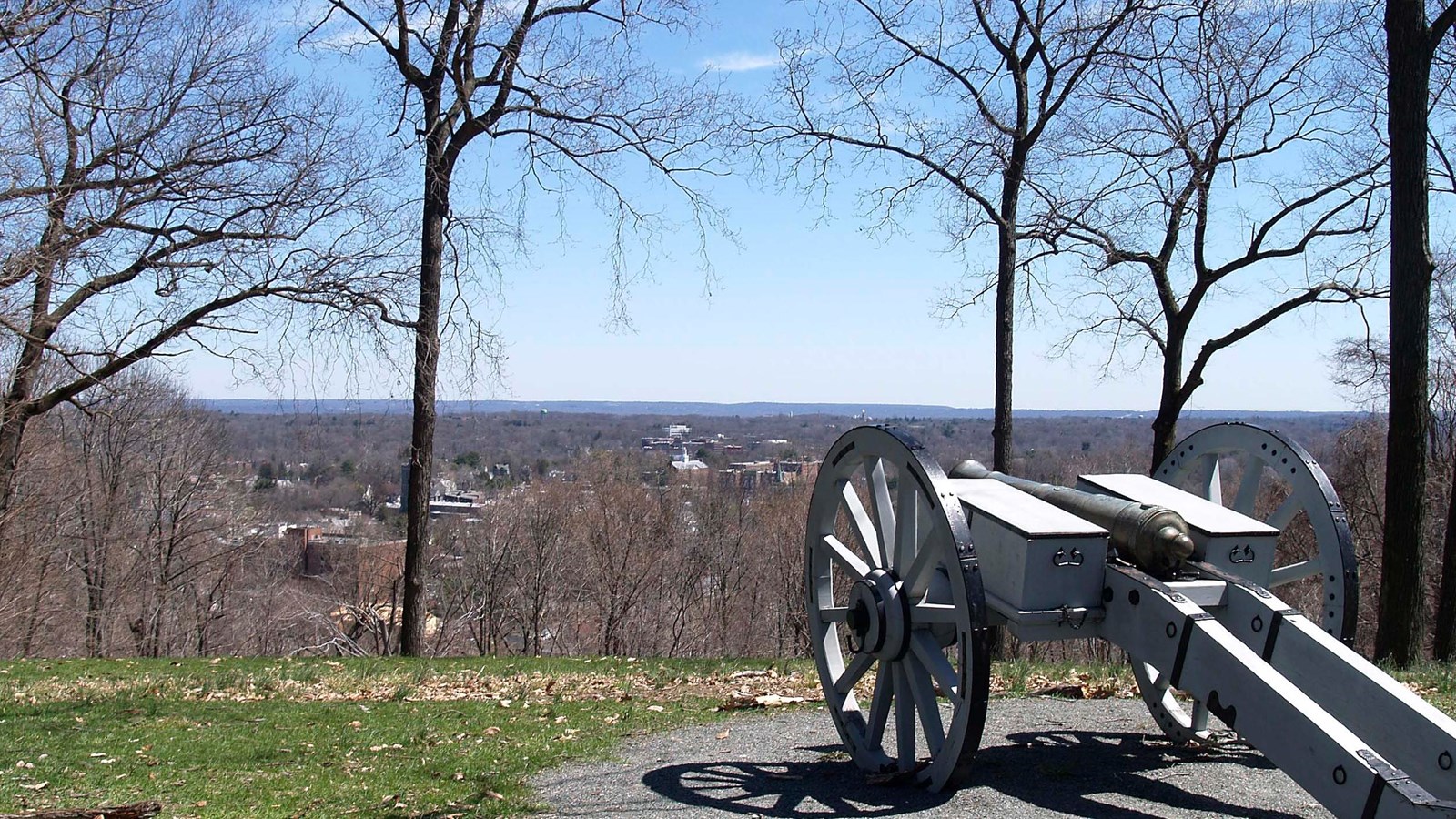Last updated: November 13, 2021
Place
Fort Nonsense

NPS
Quick Facts
Location:
Morristown, NJ
Significance:
Former site of Continental Army earthworks redoubt
Amenities
1 listed
Parking - Auto
Following his winter encampment in the area after the battles of Trenton and Princeton, General George Washington wanted to secure Morristown as a supply base. On May 14, 1777 he ordered the construction of a fortification, called a redoubt, on a hill bordering Morristown so “…that it may serve as a retreat in case of necessity.”
Originally referred to as “the Hill” or “Kinney’s Hill,” the fortified redoubt commanded the town. The function of the Fort was as an observation and alarm post, and a place of retreat for guards stationed in the town. The British never made an attack on Morristown, however, and the fortified hilltop was never used. It was common for a small fortification such as Fort Nonsense to be built for the protection of military encampments and strategic military depots.
Washington’s men leveled surrounding trees, dug trenches, raised breastworks, built a guardhouse for 30 men, and fortified the crown of the hill with an earthwork redoubt. As early as the 1790s the hill was called Fort Nonsense. A legend had grown that Washington had set his men to fortify the hill simply as a way of keeping troops busy. This explanation is very unlikely. In their pension claims after the war, soldiers referred to the work as 'Fort Nonsense.'
In addition to the earthworks, it is believed that the Morris County Militia was instructed to build a beacon of between 18 and 20 feet high. It was to be constructed of a loose frame of logs with smaller combustibles filling the center. Such beacons were in fact found extending from the Hudson Highlands and all through northern New Jersey. The beacon system was used on June 7, 1780 and again on June 23 when the British crossed into New Jersey. Records tell of area militia responding to the alarms in June and engaging the British at Springfield.
Fort Nonsense Hill is open to the public and subject to the same hours as other park grounds. In addition, the park is surrounded by private property. For your safety and for the consideration of park neighbors, please be careful as you walk the grounds.
Originally referred to as “the Hill” or “Kinney’s Hill,” the fortified redoubt commanded the town. The function of the Fort was as an observation and alarm post, and a place of retreat for guards stationed in the town. The British never made an attack on Morristown, however, and the fortified hilltop was never used. It was common for a small fortification such as Fort Nonsense to be built for the protection of military encampments and strategic military depots.
Washington’s men leveled surrounding trees, dug trenches, raised breastworks, built a guardhouse for 30 men, and fortified the crown of the hill with an earthwork redoubt. As early as the 1790s the hill was called Fort Nonsense. A legend had grown that Washington had set his men to fortify the hill simply as a way of keeping troops busy. This explanation is very unlikely. In their pension claims after the war, soldiers referred to the work as 'Fort Nonsense.'
In addition to the earthworks, it is believed that the Morris County Militia was instructed to build a beacon of between 18 and 20 feet high. It was to be constructed of a loose frame of logs with smaller combustibles filling the center. Such beacons were in fact found extending from the Hudson Highlands and all through northern New Jersey. The beacon system was used on June 7, 1780 and again on June 23 when the British crossed into New Jersey. Records tell of area militia responding to the alarms in June and engaging the British at Springfield.
Fort Nonsense Hill is open to the public and subject to the same hours as other park grounds. In addition, the park is surrounded by private property. For your safety and for the consideration of park neighbors, please be careful as you walk the grounds.
